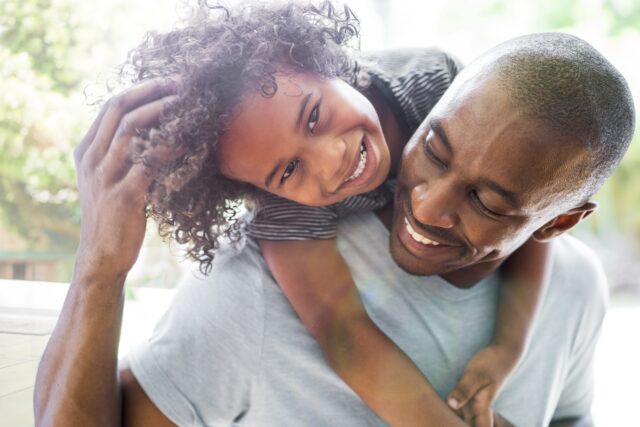A behavioral intervention plan, or BIP, is a written plan to help a student who is struggling to behave in class. It’s created for children who repeatedly misbehave at school and whose behavior is significantly impacting their learning. BIPs aim to stop problem behaviors by rewarding good ones.
What Is a Behavior Intervention Plan?
by
Gia Miller
What Is a Behavior Intervention Plan?
A BIP is a plan to help children whose problem behavior in school is affecting their learning
Clinical Experts: Stephanie A. Lee, PsyD , Margaret Dyson, PhD
en EspañolWhat You'll Learn
- What is a behavior intervention plan (BIP)?
- How is a BIP created?
- How can parents tell if a BIP is working?
Quick Read
All kids act out sometimes. But if your child’s behavior at school is making it hard for them to learn, it may be time for a behavior intervention plan, or BIP. A BIP is a written plan to help a student who struggles to behave in class. It’s designed to stop problem behaviors by rewarding good behaviors. The plan gives teachers and staff a clear set of behavioral goals for your child. And it also offers strategies to help the child meet those goals.
A BIP can be requested by teachers, school counselors, or parents. Any child can receive a BIP, even if they don’t have an individual education plan (IEP) or a 504 plan. The only requirement is that the child’s behavior is affecting their ability to learn in class.
To get a BIP, your child needs a functional behavioral assessment (FBA). An FBA looks at the “functions” of the child’s problem behaviors. Functions are the purposes of the behaviors — why the child is doing them. There are four functions of behavior:
· Sensory stimulation
· Escape, meaning getting out of something they don’t want to do
· The need for attention
· Access to something they want, like a toy or an activity
For example, a child might push a classmate because they want a toy. Or they might act out because they want attention.
The professional creating the FBA will observe your child in class. They’ll also ask for information from family and other adults who spend time with your child. FBAs and BIPs are created by someone with training and experience in behavioral psychology, like a clinical social worker or psychologist. They will suggest strategies based on what’s causing your child’s behavior.
How do you know if a BIP is working? By tracking the child’s progress daily and going over the data monthly. This can be done by the teacher, a paraprofessional, the school psychologist or even the parents. Tools like checklists, charts and report cards are a good way to track progress. If your child’s BIP isn’t working, then it’s time to rethink it. The functions of behavior may be wrong. Or your child’s needs may have changed over time.
If a BIP is working, you should see change pretty quickly. When your child starts behaving appropriately, then they no longer need a BIP.
Full Article
12 min read
Let’s face it: All kids misbehave sometimes. Whether it’s at school or home, there will be moments when your child is overwhelmed by frustration or believes they’ve been wronged, so they act out. But if your child is repeatedly misbehaving at school, and it’s significantly impacting their learning, it may be time for a Behavior Intervention Plan, or BIP.
A BIP is a written plan to help a student who is struggling to behave in class. It’s designed to stop problem behaviors by carefully rewarding the good behaviors. The plan provides teachers and other school staff with a clear set of behavioral goals, along with evidence-based strategies to help the child achieve those goals.
Anyone can request a BIP — the classroom teacher, the school psychologist or social worker, even the parents. And, any child can receive a BIP — they don’t need a specific diagnosis or even an individual education plan (IEP) or a 504 plan. The only qualification is that the child’s behavior affects their ability to learn in the classroom.
First, you need a functional behavioral assessment (FBA)
“The first step to creating an appropriate BIP is to do a functional behavioral assessment,” says Stephanie Lee, PsyD, a clinical psychologist. “An FBA is exactly what it sounds like — an assessment to determine the functions of the child’s problem behaviors in school.” Functions are the purposes of the behaviors — why the child is doing them (whether or not the child is aware of them). “The FBA legally assesses only behaviors that interfere with learning,” Dr. Lee adds. “It won’t address social problems unless they interfere with learning.”
The professional conducting the FBA will observe the student multiple times in their classroom. They’ll also get additional information from the family and other adults who regularly interact with the child.
“An FBA is a problem-solving approach that obtains a better understanding of the reason why the behavior is occurring in the classroom,” explains Margaret Dyson, PhD, a clinical psychologist in the Autism Center at Child Mind Institute. “It should clearly identify and define the challenging behaviors, which should be observable — something you can see and count. It should also include any environmental or contextual factors that are contributing to the behavior.”
Who can create FBAs and BIPs?
The rules can vary slightly, depending on the state, but FBAs and BIPs must be created by someone who has training and experience in behavioral psychology. “It’s really important that your child’s BIP is created by a qualified professional,” notes Dr. Lee.
This could be a:
- Clinical social worker
- Clinical psychologist
- Board-certified behavior analyst (BCBA)
- Someone who has received clinical training in behavioral principles and analysis
Once the FBA is complete, and the problem behaviors and the reason for the behaviors have been identified, the BIP is created.
Why the function of the behavior is so important
FBAs and BIPs are part of a specific type of therapy developed for children on the autism spectrum called Applied Behavioral Analysis (ABA), which is based on the idea that all behavior happens for a reason. The person developing an FBA or BIP draws on the ABA theory that there are four basic functions that cause all behaviors:
- Sensory stimulation
- Escape (wanting to get away from whatever they should be doing)
- Need for attention
- Access to tangibles (such as a specific item or activity)
“For the FBA and the BIP to be valid, they can only list those four functions of behavior,” says Dr. Lee. “I often see BIPs that aren’t appropriate because they didn’t actually identify a function.”
Determining the function is done by identifying both the antecedents — which is what happens right before the behavior occurs — and the consequences of the behavior.
“It’s really important to understand that, within the same child, one behavior can sometimes have different functions,” says Dr. Dyson. “Or, you might see the same behavior in two kids, but it might serve different functions. Clarifying the function will determine how to respond.”
For example, a child might be aggressive towards their classmate because they want the toy the other kid has and because they want attention. Or, one child could be disruptive during class because they don’t understand the classwork, while another child is disruptive because they want attention.
The strategies to help a child who doesn’t understand the work will look very different from the strategies for the child who wants attention.
BIP strategies and techniques
A BIP includes strategies based on the function(s) of the child’s problem behavior. “We teach them more appropriate, productive ways to get their needs met,” explains Dr. Dyson.
There are proactive strategies and techniques to prevent the behaviors and reactive strategies and techniques to manage the behaviors when they do occur. BIPs also include specific rewards that will motivate the child.
“If a child has a difficult time transitioning between different tasks in a classroom, a proactive strategy could be to use a visual schedule so the child knows when they’re going to transition and what task is coming next,” Dr. Dyson explains.
“The BIP also provides strategies on how to reward the child for the behavior you want,” she continues. “They might earn a sticker each time they demonstrate an on-task behavior, and once they earn a certain number of stickers, they can pick a prize, earn a privilege or have access to something that motivates them.”
To be successful, a BIP will target no more than four or five behaviors at a time, and it might also target a specific time frame.
“I don’t begin by trying to get the student behave all day,” says Dr. Lee. “I begin with helping them behave during one work block, and when I’ve successfully figured that out, I move to the next work block. Slowly but surely, I increase their ability to maintain behavioral consistency throughout the day.”
A BIP has SMART goals
A BIP will also include goals, which should be SMART:
- Specific
- Measurable
- Attainable
- Realistic
- Timeframes
They’re determined based on how the student was doing during the assessment period. If they only finished their work and transitioned to the next activity 10 percent of the time at the beginning of the school year, then the first goal would be for them to fully complete their work 25 percent of the time by November. The second goal might be to complete their work 50 percent of time by February, the third could be 75 percent by April and the fourth would be to successfully complete their work 85 percent of the time by the end of the school year.
Goals can also be written to help reduce the amount of support a child needs to behave appropriately. For example, the first goal could be that they’ll rein in their behavior with the help of an aide by November. The second goal could be to only need limited prompting by February, and the third to successfully calm themselves down with one or no prompts by April.
Implementing a BIP
BIPs should be used throughout the day — behaviors don’t magically disappear after lunch. They should also explain who performs what strategies. It’s a collaborative effort implemented by the group of adults who interact with the child.
How do you know if a BIP is working? By tracking the child’s progress daily and reviewing the data monthly. This can be done by the teacher, a paraprofessional, the school psychologist or even the parents. There are several ways to track progress:
- Checklists: If the goal is to stay on task, a member of the student’s team can track how long they’re engaged in a class activity or following directions. For every five minutes (or another predetermined period of time), they’ll check a small box.
- Charts: Each time the child performs the preferred behavior, such as waiting their turn, they can put a sticker or check mark on their chart.
- Daily report card: At the end of a work block, a student or team member fills out a very brief report that outlines how the child did.
Because parents are part of the student’s team, the tracker should be sent home regularly.
“The person who developed the BIP should check in at certain points to observe the child during class and see if the data is being collected with integrity,” says Dr. Lee. “But, that part can be challenging for schools with limited resources.”
What to do if the BIP isn’t working
If your child’s BIP isn’t working, then it’s time to reassess. There are several reasons that a BIP might not work:
- The functions of the behavior are wrong. If your child constantly makes jokes during the teacher’s lessons as a way of escaping, because they don’t understand the material, but the FBA states it’s because they want attention, then it doesn’t matter what reward you offer, it probably won’t be effective in reducing the behavior.
- Something has changed. “Children do change over time,” Dr. Dyson points out. “The behavior could change, the function of the behavior could change or the rewards might no longer motivate that child. A BIP is very much a working document — it’s not static. It’s important to help it, evolve it and tweak it as the child develops and makes progress.”
What if the child’s BIP goals have been achieved?
Because a BIP only targets a few behaviors at once, your child should experience some success in a short time. BIPs typically aim for regular success between 80 percent and 90 percent of the time (100 percent is unrealistic — no one is perfect).
“Ultimately, you want to get to the point where the child doesn’t need that same level of support, and they’re able to independently use the new, appropriate skills that they’ve learned,” says Dr. Dyson.
Once a behavior no longer impacts their learning, it’s time to target another behavior. When all behaviors have been addressed and your child is behaving appropriately, then they no longer need a BIP.
Frequently Asked Questions
This article was last reviewed or updated on February 4, 2025.
Topics
Gia Miller
Gia Miller is a New York-based freelance writer who covers health and parenting.
Was this article helpful?
Related Reading
-
 Behavioral Treatments at a Glance
An overview of behavioral treatments, how they work, and how they can help
Behavioral Treatments at a Glance
An overview of behavioral treatments, how they work, and how they can help
-
 Common Causes of Behavior Problems in Kids
Knowing what makes kids act out is the first step to finding solutions
Common Causes of Behavior Problems in Kids
Knowing what makes kids act out is the first step to finding solutions
-
 Disruptive Behavior: Why It’s Often Misdiagnosed
Tantrums and defiance may mask issues that aren't apparent to teachers and parents
Disruptive Behavior: Why It’s Often Misdiagnosed
Tantrums and defiance may mask issues that aren't apparent to teachers and parents
-
 Complete Guide to Managing Behavior Problems
When children struggle with their behavior, it can have a negative impact on everyone in…
Complete Guide to Managing Behavior Problems
When children struggle with their behavior, it can have a negative impact on everyone in…
-
 About Behavioral Intervention Plans (BIPs)
A Behavior Intervention Plan (BIP) is a formal written plan to help a child who…
About Behavioral Intervention Plans (BIPs)
A Behavior Intervention Plan (BIP) is a formal written plan to help a child who…
-
 Twice-Exceptional Kids: Both Gifted and Challenged
2e kids, as they’re called, have a unique set of issues that need addressing
Twice-Exceptional Kids: Both Gifted and Challenged
2e kids, as they’re called, have a unique set of issues that need addressing
-
 Breaking the Behavior Code
How teachers can read and respond more effectively to disruptive students
Breaking the Behavior Code
How teachers can read and respond more effectively to disruptive students
More Related




